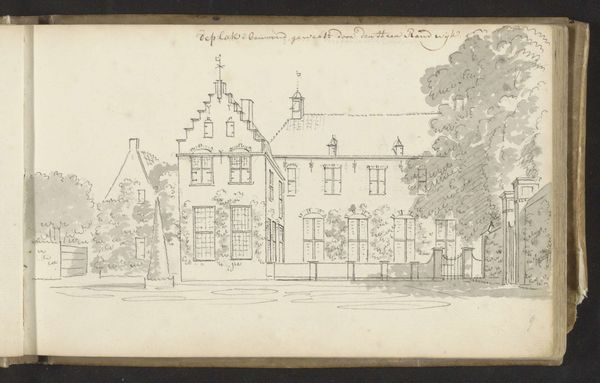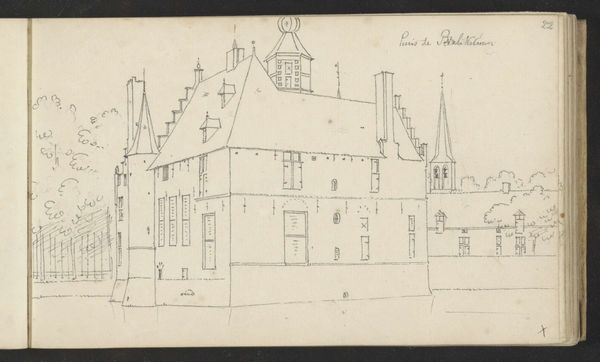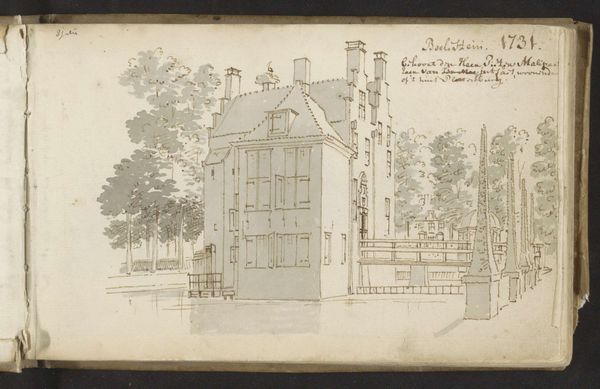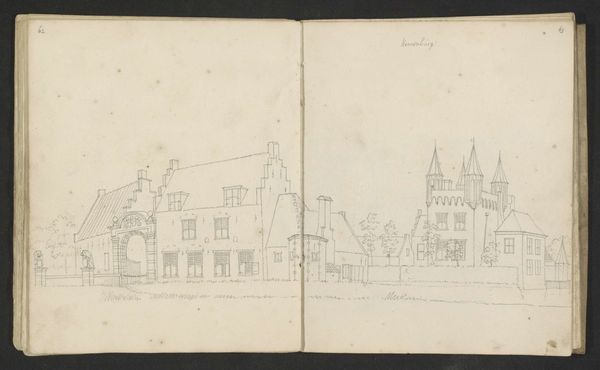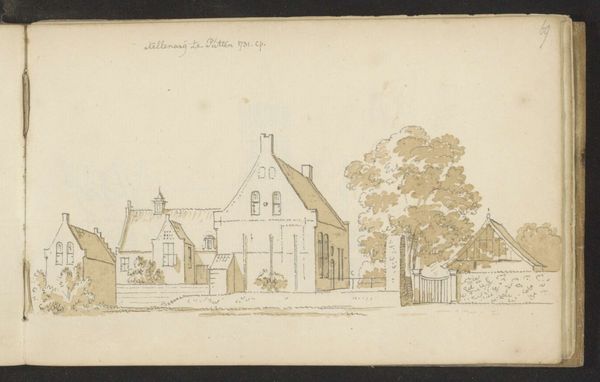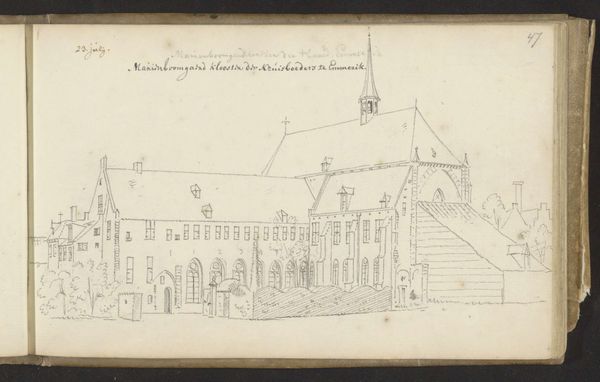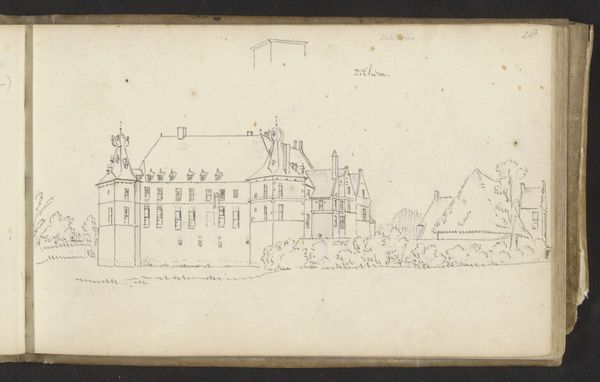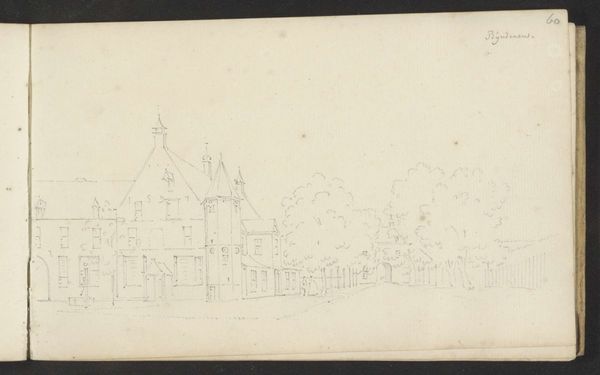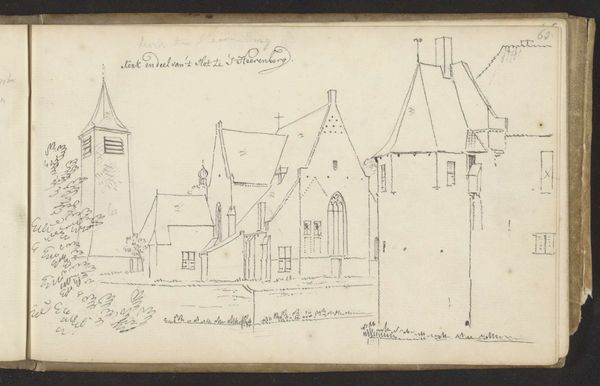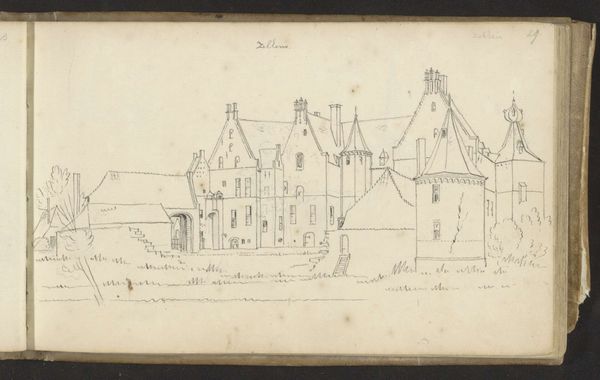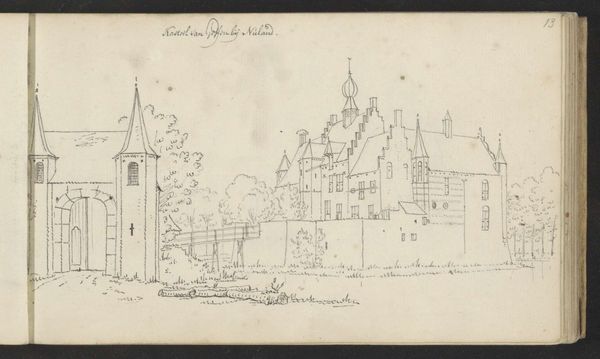
drawing, paper, ink
#
drawing
#
aged paper
#
toned paper
#
baroque
#
sketch book
#
landscape
#
paper
#
personal sketchbook
#
ink
#
pen-ink sketch
#
ink colored
#
pen work
#
sketchbook drawing
#
cityscape
#
storyboard and sketchbook work
#
sketchbook art
Copyright: Rijks Museum: Open Domain
Abraham de Haen II made this drawing of the Binnenhof of the cloister ‘s-Gravendaal or Nieuwklooster with pen in the 18th century. The social role of monasteries in the Netherlands was significant, serving not only as religious centers but also as landowners and employers, influencing local economies and social structures. The Binnenhof's architecture, rendered in meticulous detail, reflects Dutch society's religious and economic facets during the Golden Age. The presence of religious structures indicates the importance of the church in daily life, while the surrounding buildings suggest the administrative and economic functions associated with monastic life. Further investigation into period maps, architectural records, and monastic inventories can contextualize this artwork, offering a comprehensive picture of the cultural and institutional influences that shaped artistic production.
Comments
No comments
Be the first to comment and join the conversation on the ultimate creative platform.
